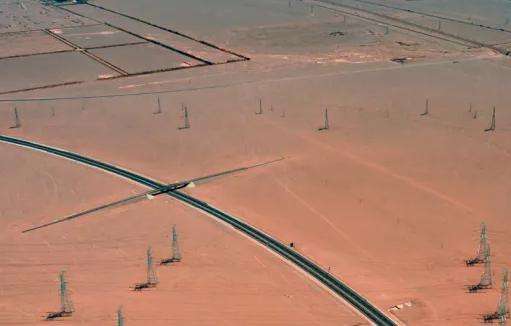Gallium arsenide solar cells.
The International Space Station weighs nearly 400 tons, has three experimental cabins and 31 scientific research cabinets. Power is provided by eight arrays of silicon solar cells 112 feet (34 meters) long. a photoelectric conversion rate of only 23%, the total power supply is only 90 kilowatts, and external heat sinks are required. The working and living space of astronauts is very small.
The Tiangong Space Station weighs only 90 tons, with 16 scientific experiment cabinets and 7 reserved experiment cabinets piled up on it. The International Space Station weighs 9 times more, but has only 7 more experimental cabinets than Tiangong. this space utilization rate was beaten by Tiangong by several streets.
What is an arsenic solar cellre of gallium:
You should know that the discovery of solar cells is a revolution in the history of human energy, and its development prospects are very broad. III-V semiconductor materials are an important class of solar cell materials developed after germanium (Ge) and silicon (Si) materials. This type of material has many advantages, such as direct bandgap energy band structure and high light absorption coefficient. , only a few microns thick can completely absorb sunlight, etc.
Gallium arsenide is a typical representative of III-V semiconductor materials. Its band gap width Eg is 1.43 eV (theoretical calculations show that when Eg is between 1.2 and 1.6 eV, the conversion efficiency is 1.43 eV. the highest). Spectral match makes it a solar cell material ideal.
What are solar cells?
Physical properties:
There are two allotropes, amorphous silicon and crystalline silicon. Crystalline silicon is gray-black, amorphous silicon is black, density is 2.32-2.34g/cm3, melting point is 1410℃, boiling point is 2355℃, silicon crystalline is an atomic crystal. Insoluble in water, nitric acid and hydrochloric acid, soluble in hydrofluoric acid and alkalis. Hard and metallic.
Chemical properties:
Silicon has obvious non-metallic properties and can be dissolved in alkali metal hydroxide solutions to produce (meta)silicate and hydrogen . Under heating, it can interact with elemental non-metals such as halogen, nitrogen and carbon, as well as some metals such as Mg, Ca, Fe, Pt, etc. Generate silicide.
It is insoluble in general inorganic acids, but solublele in alkaline solutions, and releases hydrogen gas to form the corresponding alkali metal silicate solution, which can interact with water vapor at scalding temperatures.
Detailed information:
Doping a trace amount of Group IIIA elements into single-crystal silicon forms a p-type silicon semiconductor; doping a tiny amount of a group VA element forms an n-type semiconductor. p-type and n-type semiconductorWhen semiconductors are combined to form a p-n junction, a solar cell can be created, which converts radiant energy into electrical energy.
It is a promising material in energy development. In addition, diodes, transistors, thyristors, field effect transistors and various ICsWidely used integrated circuits (including chips and processors in personal computers) are all made of silicon.
When molten elemental silicon solidifies, the silicon atoms are arranged in a diamond lattice to form numerous crystal nuclei. If these crystal nuclei transform into crystal grains with the same orientation of the crystal plane, these crystal grains combine in parallel. to form monocrystalline silicon.
The production method of monocrystalline silicon is generally to first prepare polycrystalline silicon or amorphous silicon, and then use the Czochralski method or suspended zone fusion method to grow monocrystalline silicon into stick shape from the melted mass.
Single crystal silicon rods are the raw materials for the production of single crystal silicon wafers. With the rapid increase in demandof the domestic and international market for monocrystalline silicon wafers, the market demand for monocrystalline silicon rods is also showing rapid growth. orient yourself. .
Baidu Encyclopedia—Si
Solar cells, also known as photovoltaic cells, are a type of device that converts solar energy into electric energy. Here are the most common types of solar cells:
Silicon solar cells: Silicon solar cells are the most common type of solar cells and include monocrystalline silicon, polycrystalline silicon, and amorphous silicon. Monocrystalline silicon solar cells have the highest efficiency, but their cost is high; polycrystalline silicon solar cells have lower costs and slightly lower efficiency; amorphous silicon solar cells have low production costs, but have the efficiencythe weakest.
Cadmium selenide solar cells: Cadmium selenide solar cells have high efficiency and long life, but they contain toxic substances.
Copper-indium-gallium selenide solar cells: Copper-indium-gallium selenide solar cells are made of copper, indium, gallium and selenium and have high efficiency, but the cost of production is high.
Organic solar cells: Organic solar cells use organic materials as semiconductors and are relatively inexpensive, but have low efficiency and a short lifespan.
Dye-Sensitized Solar Cells: Dye-sensitized solar cells use organic dyes to absorb solar energy and then convert it into electricity. They have the advantage of being inexpensive, light, flexible and easy to manufacture, but are less effective.
Perovskite solar cell: Perovskite solar cell is a new type of solar cell developed in recent years and has the advantages of high efficiency, low cost and long service life. life.














